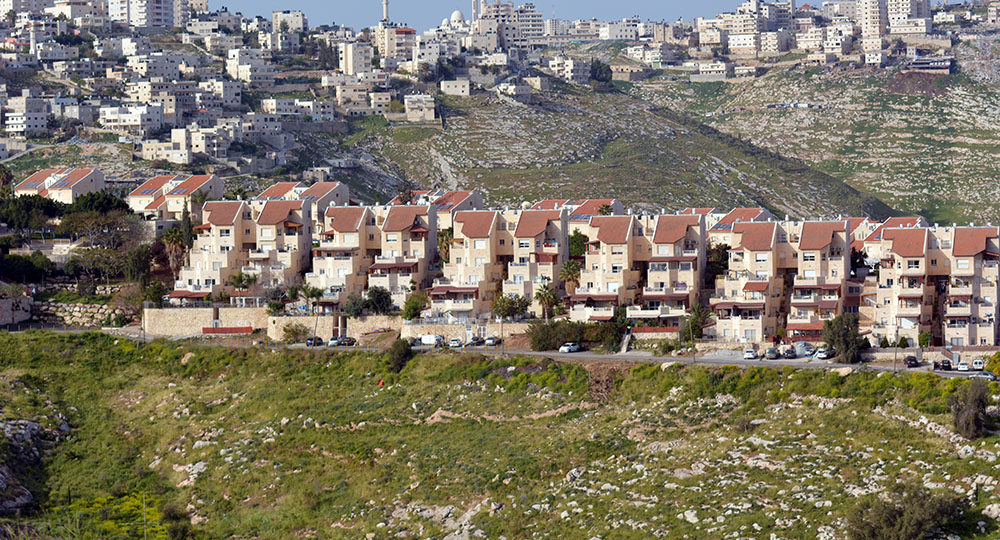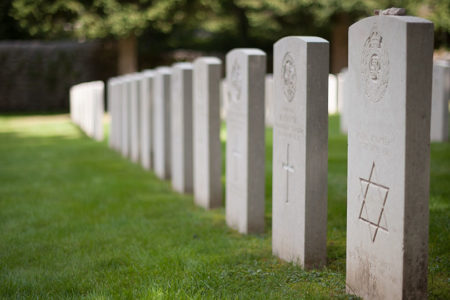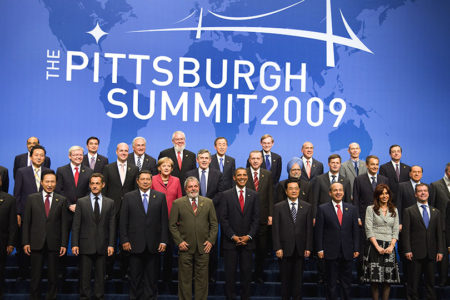The Jewish Settlements: Why All the Fuss?
Barack Obama brought the political hot-button issue of Israel’s “Jewish settlements” to center stage last year by publicly insisting the new Israeli government headed by Benjamin Netanyahu immediately halt all construction in the disputed communities. He also demanded a construction halt in the eastern half of Jerusalem, Judaism’s holiest ground on Earth.
Seizing the opportunity the President’s demand granted them, regional Arab leaders quickly echoed it, especially Palestinian Authority President Mahmoud Abbas. He noted that around 300,000 Jewish people live today in Jordan’s former West Bank and the Golan Heights, along with another 190,000 or so in contested parts of Jerusalem.
Speaking at a press conference with British Prime Minister Gordon Brown in London last August, Prime Minister Netanyahu insisted that Jewish settlements are not the cause of the Arab-Israeli conflict, but a result of it. As he has done many times before, the veteran politician noted that the conflict long predates Israel’s capture of territory where the controversial communities are located. And he vowed to keep repeating this truth until world leaders acknowledge it.
President Obama is hardly the first international leader to maintain that Jewish settlements on land claimed by the Palestinians pose one of the greatest impediments to Middle East peace. In fact, all American leaders have opposed Israeli home-building in the disputed territories since the areas fell under Israel Defense Forces (IDF) control during the dramatic 1967 Six-Day War. Most world leaders share this position, as demonstrated in a series of United Nations resolutions over the years calling for Israel to desist immediately from such home construction.
Exactly what are we talking about when we say “Jewish settlements”? And are they really one of the largest obstacles to peace, as many insist?
No at Khartoum
The first important historical fact essential to comprehend is that the four regions where disputed Jewish communities have gone up since 1967—the Sinai Peninsula, the adjacent Gaza Strip, the “West Bank of the Kingdom of Jordan,” and the Golan Heights—were all captured by Israeli military forces in the midst of a war forced upon the small Jewish state by three neighboring Arab countries whose combined populations vastly outnumbered Israel’s.
The frontline states (Egypt, Jordan, and Syria) were actively supported by six other Arab countries, including Iraq and Saudi Arabia. Moreover, Cairo and Damascus were heavily backed by the powerful Soviet Union, with the United States and France weakly supporting Israel.
Soon after the Six-Day War ended, the Labor-led Israeli government offered to evacuate all of the seized territory (apart from the eastern half of Jerusalem where religious Jews had lived for centuries before Jewish settlement was violently ended during the 1948 war) in exchange for a final peace treaty with surrounding Arab states.
Then-Foreign Minister Abba Eban, one of Israel’s greatest statesmen, made it abundantly clear that his country had absolutely no interest in governing millions of hostile Arabs living in the four captured zones, or settling among them. However, the peace offer was soundly rejected at a subsequent Arab League meeting in Khartoum, which set the stage for everything that followed.
Who Occupied What?
The world media and most governments soon labeled the captured Arab areas as “occupied territories,” which quickly became The Occupied Territories. Israeli leaders objected. They noted the word occupied had been widely used to describe various sovereign, European countries that were violently conquered by invading Nazi forces before and during World War II—hardly equivalent to Israel taking control of several relatively small, adjacent parcels of land in a war of defense forced on it by three large, Soviet-backed armies using the captured areas as the frontlines for their assaults.
Apart from the Egyptian Sinai Peninsula, the areas in question were themselves disputed pieces of land. Egypt was “occupying” the Gaza Strip when Israeli forces captured the small coastal zone during the Six-Day War. Jordan had annexed Judea and Samaria and the eastern half of Jerusalem after its forces invaded Judaism’s biblical heartland during the 1948 war, but no country recognized that annexation as valid apart from Britain and Pakistan.
On top of that, Jewish people had lived in the West Bank (Judea and Samaria) for centuries until being violently uprooted in 1948. Plus the area had been open to Jewish settlement under the original British Mandate given to London by the League of Nations after World War I. The water-rich Golan Heights was supposed to become part of the emerging Jewish state until British officials ceded it to France (which then ruled Syria) in the early 1920s.
Even before the Arab states rejected Israel’s postwar peace offer in November 1967, home construction began in areas where Jews had lived before being expelled by Arabs between 1929 and 1948, especially in the holy cities of Jerusalem and Hebron. After the Arab League rejection, building was extended to four areas outside of Hebron (later known as the Gush Etzion block), where Jewish communities had also stood before 1948. A kibbutz known as Kayla, built by Jewish people on the northern shores of the Dead Sea in 1930 to help mine potash, was reestablished in 1968 after being destroyed by Jordanian forces in May 1948. A nearby kibbutz, also conquered in 1948, was also rebuilt.
The first Jewish settlement to go up in the Gaza Strip was Kfar Darom (Southern Village). It was originally established in 1946 before being destroyed by invading Egyptian forces in 1948. The Israeli government at the time noted that a small Jewish community had existed for centuries in Gaza City, the heart of the small captured coastal zone, before being violently pushed out by rioting Arabs in 1929. However, Israeli leaders said they would not permit resumed Jewish residency there since it was bound to spark violent opposition from local Palestinians. But they did allow construction of a number of Jewish neighborhoods in parts of Jerusalem’s extended municipal boundaries that had been controlled by Jordan.
Settling, Uprooting
The main Israeli settlement expansion only got under way after Menachem Begin came to power in 1977. Before the fiery Likud leader won the election for prime minister, ousting Labor’s Yitzhak Rabin, there were only a few thousand Jewish people living in homes inside Jordan’s former West Bank, apart from the estimated 50,000 residing in disputed parts of Jerusalem. Around 1,000 lived in the Gaza Strip, and far less than that in the Golan Heights.
As he was beginning to support a substantial Jewish influx into Judea, Samaria, the Golan Heights (which his government formally annexed in 1981), and the Gaza Strip, Begin was also simultaneously uprooting 18 Jewish communities from the Sinai Peninsula. That action, which earned him the wrath of many settlement leaders, was a result of the 1978 Camp David peace treaty with Egypt. The highly emotional expulsion of around 2,500 residents from the coastal settlement of Yamit took place in 1982.
The Likud-led government especially encouraged religious Jews to return to ancient biblical sites, such as Shiloh north of Jerusalem, established in 1978. Today it is a thriving community with nearly 2,000 residents. But it also backed several new building projects that would later become small cities, especially Ariel in northern Samaria, with a population of some 20,000, and Ma’ale Adumim due east of Jerusalem, which has become the third largest disputed community with around 35,000 residents today.
Of course, it was another Likud government, headed by Ariel Sharon, that evacuated all 21 Jewish communities from the Gaza Strip in 2005, along with four remote ones in northern Samaria. Will Netanyahu uproot more Jewish settlements from Israel’s ancient heartland as part of Barack Obama’s new peace push? Stay tuned.







